Review – Renault Megane E-Tech Electric – Should Volkswagen Be Worried?
Renault Megane E-Tech Electric
Renault knows how to build and sell an electric car. With 71,579 copies, the Zoe was the third best-selling EV in Europe in 2021. After ten years, the Zoe finally gets a big electric brother: the Renault Mégane E-Tech Electric .
No copy
The model name suggests that Renault has provided the current generation of the Mégane with an electric powertrain, as Volkswagen already did a few years ago with the E-Golf and Kia with the e-Niro. Nothing could be further from the truth. The electric Mégane E-Tech is a completely new model, which has nothing to do with the traditional variant with an internal combustion engine. In fact, the regular Mégane will remain available next to the electric variant, but only as a station wagon version.
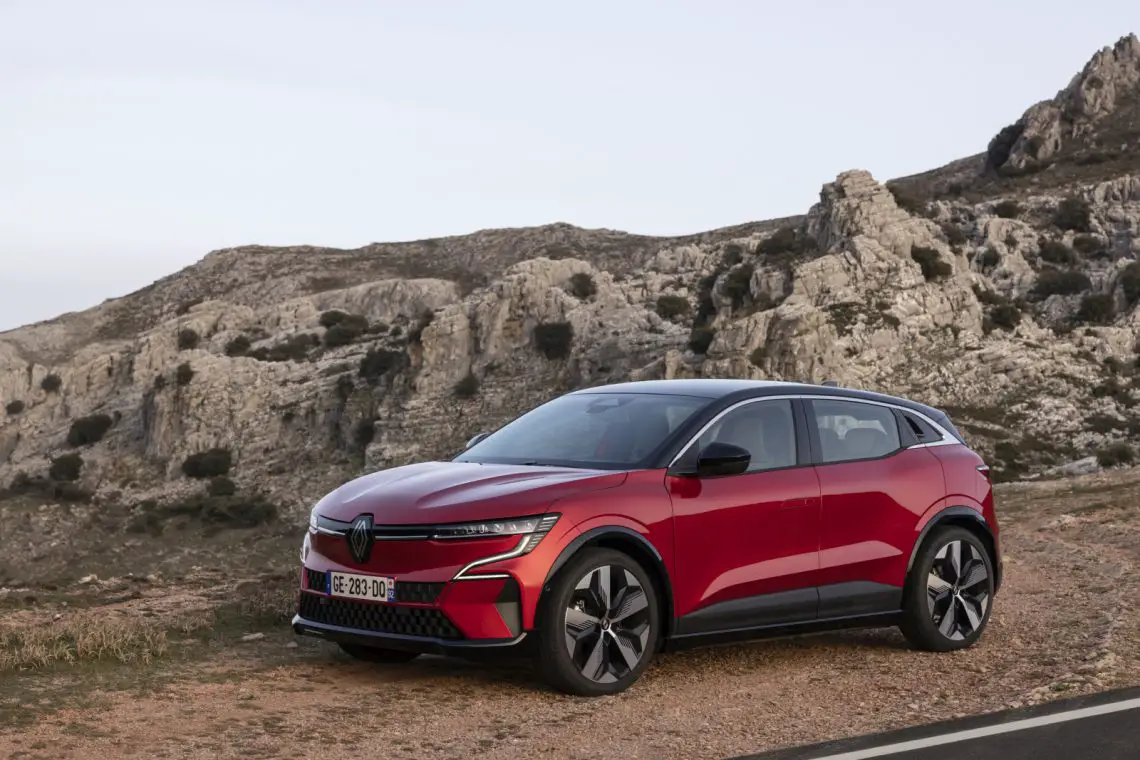
crossover hatchback
We don’t have to tell you that the Mégane E-Tech Electric has nothing to do with the regular version. If you take a look at the photos, you will immediately see: the car looks completely different. The body shape also stands out. The French EV is not a traditional hatchback, but you can’t call it a crossover either. It’s a bit in between.
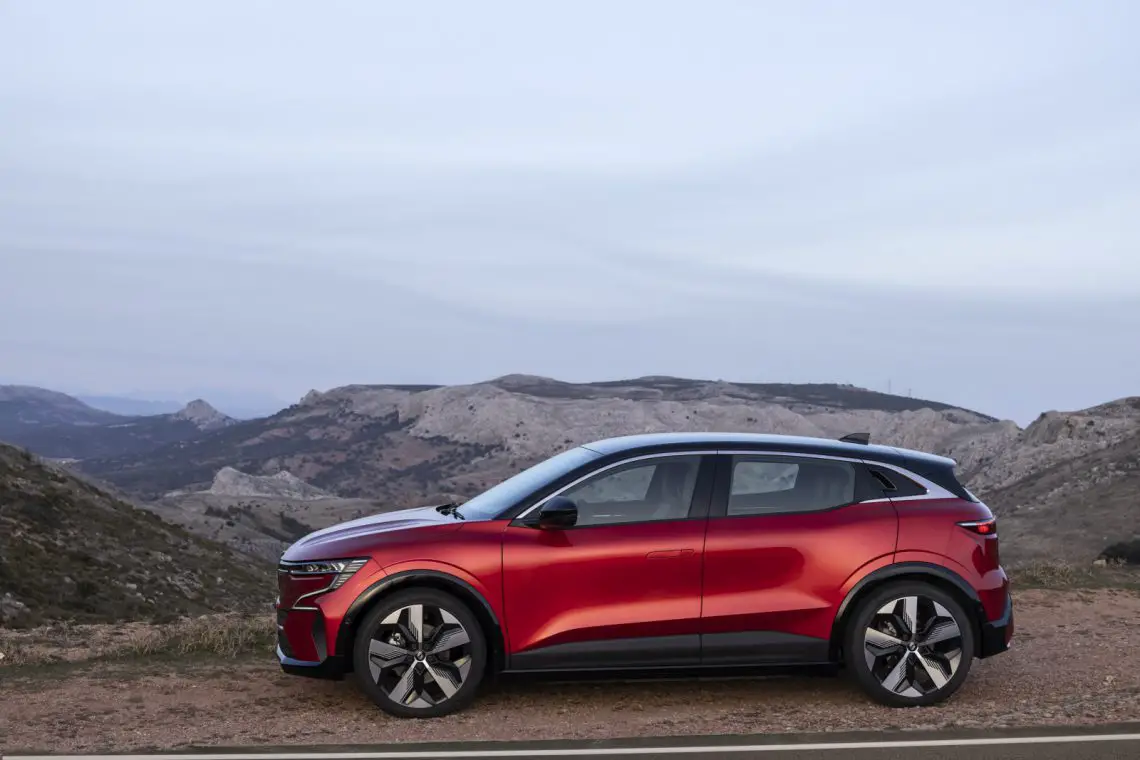
Compact outer dimensions
With a length of 4.21 meters, it is almost 15 centimeters shorter than the regular Mégane. But like I said, you shouldn’t compare it with that. With what then? Well, the Volkswagen ID.3 for example, which is only five centimeters longer. As with the German, the wheels of the Mégane are placed at the extreme corners of the car. Despite its compact exterior dimensions, there is enough space in the interior thanks to a generous wheelbase of 2.70 meters.
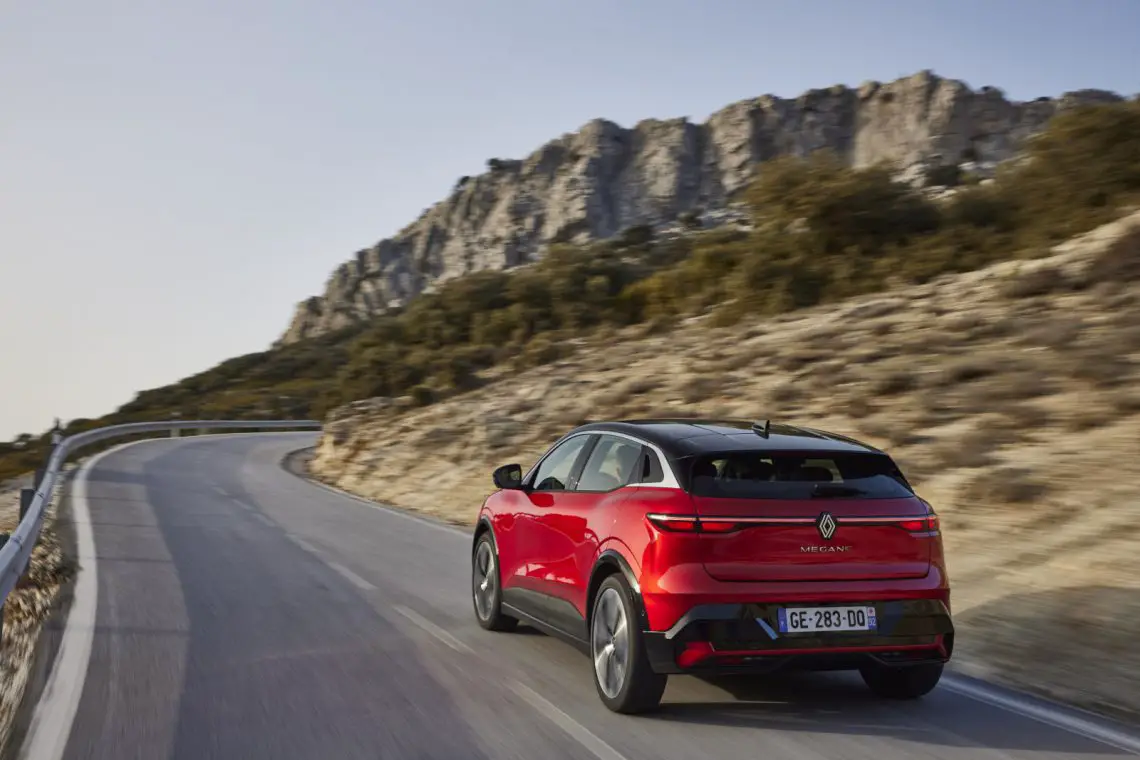
Lightweight
The Mégane is based on the new modular CMF-EV platform, which has been specially developed for electric cars. The battery pack is of course located in the bottom, and thanks to the use of new and thin batteries, it takes up 40 percent less space than with the Zoe. The weight of the car is therefore not too bad: 1,640 kilograms. That’s not much for an EV of this size. The ID.3 with almost the same battery capacity weighs about 150 kilos more.
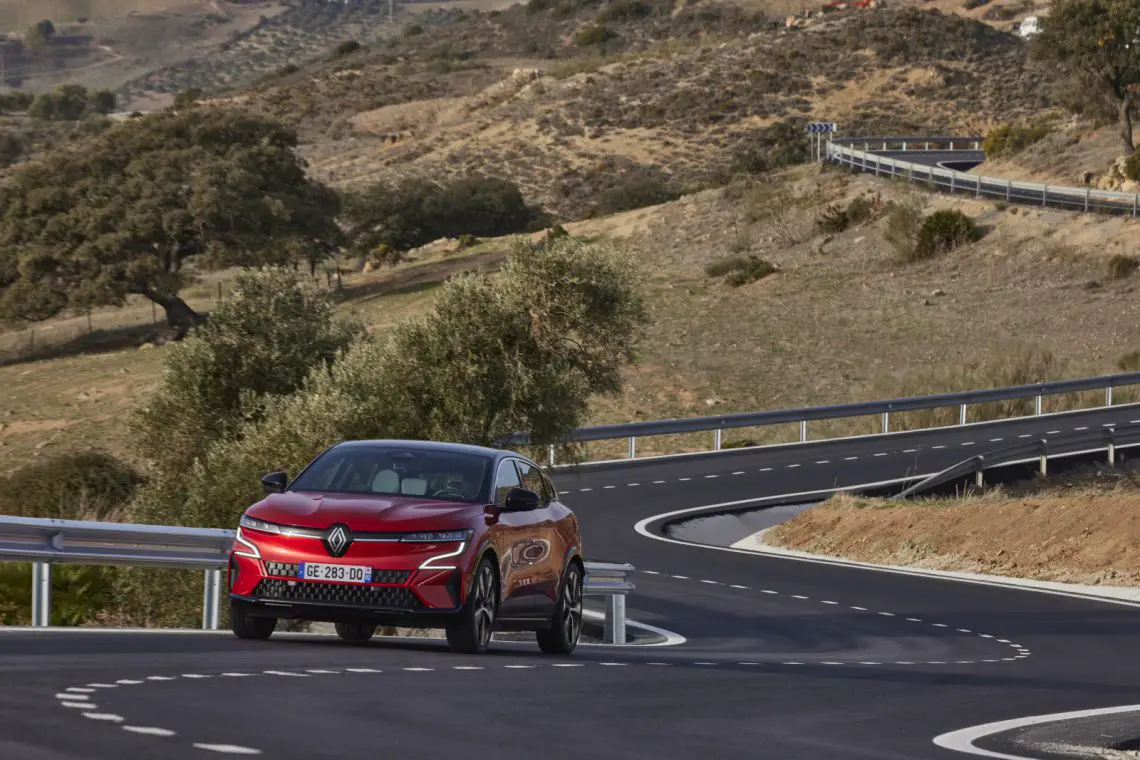
Driving experience
Do you notice this while driving? Yes and no. If you come from a petrol car, you will notice that you are driving a few more kilos. If you switch from another electric car to the Mégane, you immediately notice that it is certainly not a tough guy. It is quite agile and manoeuvrable, making it a very pleasant car to drive. The suspension is not stiff, as is often the case with many other (heavy) EVs. This allows you to drive normally over thresholds and bumps and potholes are neatly removed. The steering is not overly light and offers enough feel to position the car accurately.

Range Mégane E-Tech Electric
The Renault comes with a choice of two battery packs and two engine capacities. A 40 kWh battery gives a range of 300 kilometers (WLTP). More than sufficient for the average Dutch person, who, according to many studies, does not drive more than 40 kilometers in a day. For those who make more kilometers every day, Renault offers a larger battery of 60 kWh, with which the Mégane can cover 450 to 470 kilometers (WLTP).
You can charge at a public charging station or at home – if you have the right connection – up to 22 kW, which is particularly fast. Hang the car on the charger for an hour at the shopping center and there are 160 kilometers in the battery again. If you are in a hurry, you can charge up to 130 kW with a fast charger. In that case, you can top up to 300 kilometers of driving range in half an hour. Renault offers an 8-year warranty on the battery pack. If the battery falls below 70% of its capacity within that period, it will be replaced free of charge.
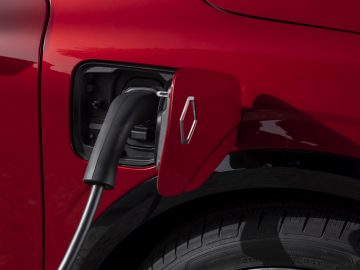
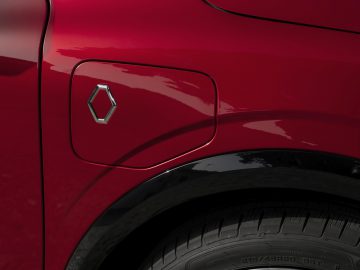
Two engine powers
There is a choice of two engine powers, but the Mégane is in all cases a front-wheel drive. If you opt for the 40 kWh battery pack, the electric motor is good for 130 hp and 250 Nm. The larger 60 kWh battery works together with a 220 and 300 Nm strong motor, but you can also combine this battery pack with the less powerful – but more economical – 130 hp electric motor.
The motor weighs 10% less than the one currently used in the compact Zoe, yet it is significantly more powerful. The 220 hp version provides a 0-100 time of 7.4 seconds. Nice and smooth, for a family car. Due to the instant torque, you shoot forward quickly, especially the first meters and the front wheels sometimes even slip a bit, if you really give full throttle.
The two battery packs and engine powers at a glance:
EV40: 40 kWh + 130 hp: a range of 300 km (WLTP)
EV60: 60 kWh + 130 hp: a range of 470 km (WLTP
EV60: 60 kWh + 220 hp : a range of 450 km (WLTP)
Four regeneration modes
To recover energy, you can brake on the electric motor: so-called regenerative braking. Lifting the accelerator pedal is then sufficient to slow down the car, without having to touch the brake pedal. With flippers behind the steering wheel you can adjust how strongly the car brakes on the engine. There is a choice of four regeneration modes: Level 0 (no regenerative braking) to Level 3 (maximum regeneration).
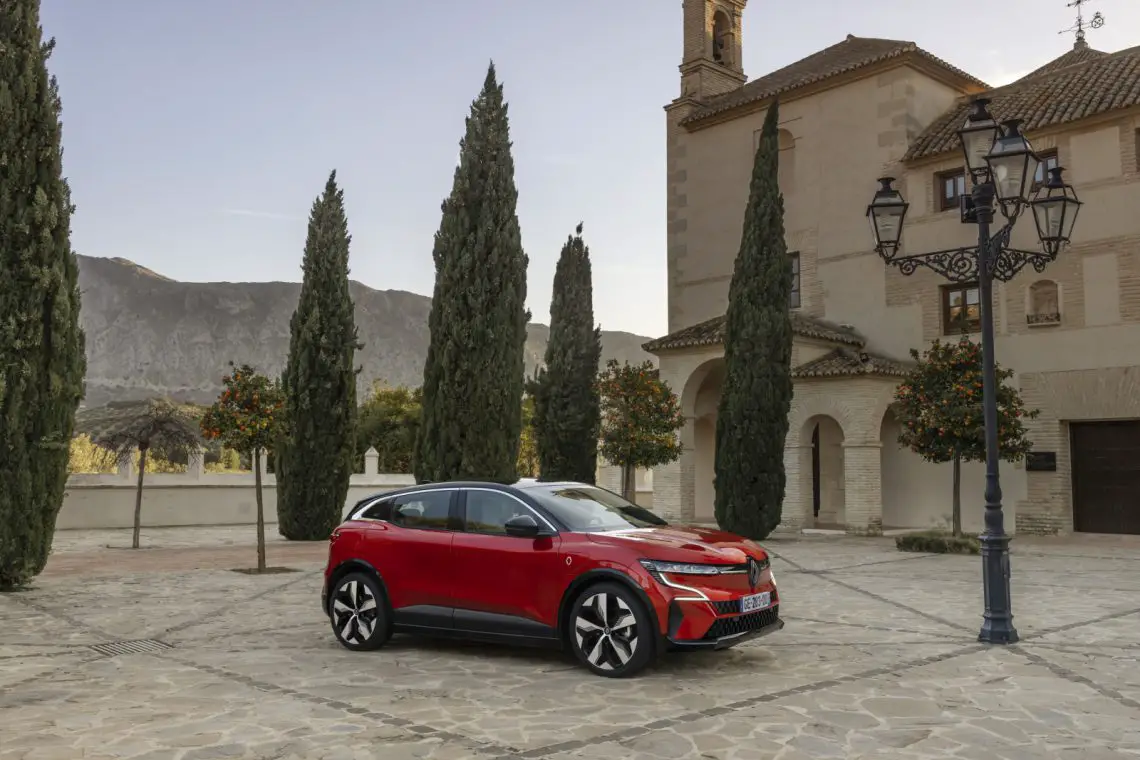
Can a Mégane E-tech tow a trailer?
Yes, of course! It can carry more than just a set of bicycles on a bicycle carrier. It can pull up to 900 kilograms, if you go for the most powerful version. A small trailer or folding trailer is therefore no problem. Of course you can also equip it with roof racks, so that you can transport a roof box, bicycles or skis.
Luggage compartment Mégane E-Tech Electric
Because the electric motor is in the front, there is quite a bit of luggage space in the back: 440 liters. 55 liters more than you get in the ID.3. The space is also very deep, so you can stack a lot of suitcases. However, a height-adjustable loading floor is missing, resulting in a considerable lifting sill. Moreover, you do not have a flat loading floor, if you throw the rear seat forward. The charging cables can be placed in a separate compartment in the bottom at the back. Tip: take them out before you stack the suitcases. There is no extra storage space under the hood, because that’s where the engine and other technical components, such as the air conditioning system, are located.
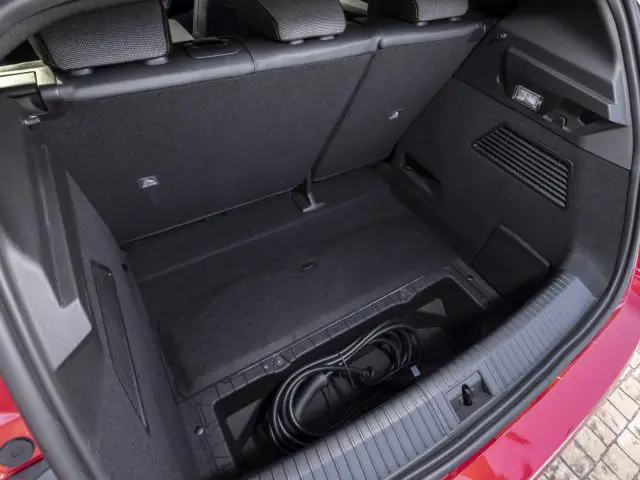
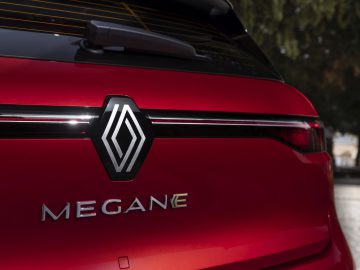
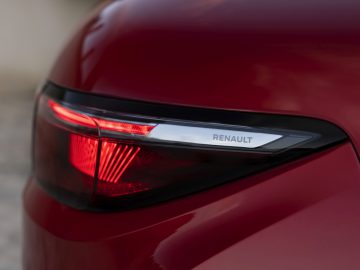
Space offer
The space on offer is well organized in the Megane, the interior dimensions are comparable to the regular Mégane. In the back you sit well up to a length of 1.80 meters and because of the lack of a tunnel for the drive shaft you can better lose your feet. Visibility all around is good, only the view to the rear is very limited due to the coupé-like roofline. A rear-view mirror that turns into a screen at the push of a button solves that problem.
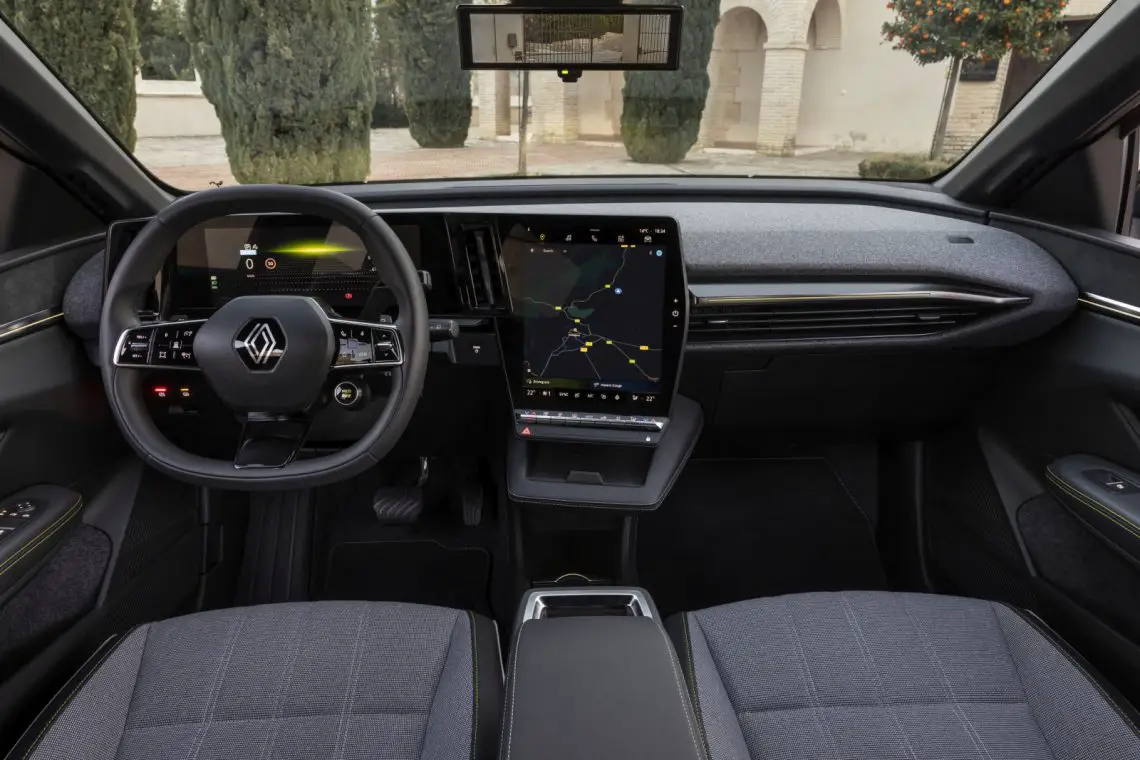
Android Automotive
The OpenR display, as Renault calls the infotainment screen, draws all the attention in the interior. It actually consists of two large screens – both 12-inch – placed side by side. One horizontal, the other vertical. By the way, you get a 12- and 9-inch screen as standard, but that should not spoil the fun.
The operating system comes from Google: Android Automotive. We first encountered the system in the Polestar 2, but more and more car brands are now using it. It works very fast and several Google apps, such as Google Maps, are present. Maps can perfectly plan charging stops on long journeys, because it knows all charging locations in Europe and knows when the Mégane is ready for fresh electrons.
Ideal, because that way you can go on holiday without worries, without having to map out a route at the kitchen table along European charging locations weeks in advance. Also nice: Renault has been smart enough to provide the interior with some physical buttons, so that you can quickly operate things like the climate control while driving, without having to take your eyes off the road.

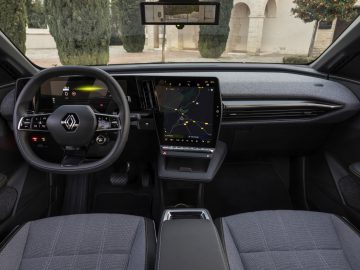

Conclusion
It is an interesting strategy from Renault: to offer two completely different models with practically the same model name at the same time. It will cause some confusion in the beginning, but we understand the choice of the French. The Mégane is one of the most important models of the brand, with a huge name recognition. You don’t just say goodbye to that.
The electric Mégane has everything that the old and confidence Mégane also has and more: it is practical, comfortable, but also nice and smooth. In addition, the infotainment system is state-of-the-art. For this money there is no car with a better infotainment system, then you have to save up for a Tesla .
Prices Renault Megane E-Tech Electric.
EV40: You can drive the Megane E-Tech Electric from 35,390 euros. For this you get the entry-level model: The EV40 in the Equilibre version with a range of 300 kilometers. The richer Techno version can be ordered from 38,390 euros.
EV60: The EV60 (450-470 kilometers) comes in four versions: the Equilibre for 39,990 euros, the Evolution for 41,790 euros, the Techno for 42,990 euros and the Iconic for 45,990 euros.
Renault Megane E-Tech Private lease
The private lease prices of the new Renault Megane E-Tech electric start at 449 euros per month for the EV40 Equilibre Boost Charge version with 40 kWh battery. The version with a 60 kWh battery, 160 kW (220 hp) electric motor is available for private lease prices from 499 euros per month.

